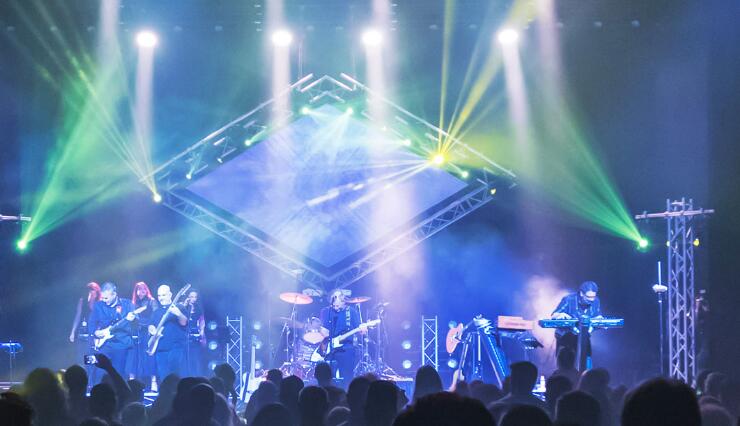Release time:Mar 13,2024View:100928
Controlling DMX stage lighting involves several steps, including setting up the lighting fixtures, connecting them to a DMX controller, programming the controller, and executing lighting cues during performances or events. Here's a basic guide to controlling DMX stage lighting:

Set up Lighting Fixtures: Install your DMX-compatible lighting fixtures, such as moving heads, LED par cans, or LED strip lights, according to your lighting design plan. Ensure they are securely mounted and positioned as desired.
DMX Cabling: Connect the lighting fixtures to a DMX controller using standard DMX cables. DMX cables typically have 3-pin or 5-pin connectors. Ensure proper termination of the DMX chain by using termination plugs or terminating the last fixture in the chain according to the manufacturer's instructions.
DMX Controller Setup: Set up your DMX controller according to the manufacturer's instructions. This may involve configuring fixture profiles, patching fixtures to specific DMX channels, and setting up scenes or cues for your lighting cues.
Programming: Use the DMX controller's interface to program your lighting cues. This may involve setting color values, adjusting pan and tilt movements for moving lights, adjusting dimmer levels, and creating dynamic lighting effects.
Addressing Fixtures: Each DMX fixture must have a unique DMX address to be controlled independently. Use the DMX controller's addressing function to assign DMX addresses to each fixture. Ensure there are no conflicting addresses in your DMX universe.
Creating Lighting Cues: Program your lighting cues into the DMX controller's memory. This typically involves setting up scenes or presets with specific lighting parameters for different moments in your performance or event. You can also create sequences or chases for dynamic lighting effects.
Testing and Rehearsing: Test your lighting cues to ensure they work as intended. Rehearse your lighting cues in sync with the performance or event to fine-tune timing and transitions.
Executing Lighting Cues: During the performance or event, use the DMX controller to execute your lighting cues according to the cuesheet or script. Trigger cues manually or use automation features to run cues automatically.
Live Control: During live performances, you may need to make real-time adjustments to the lighting cues based on the performers' actions or audience reactions. Use the DMX controller's live control features to adjust lighting parameters on the fly.
Maintenance and Troubleshooting: Regularly maintain your lighting fixtures and DMX controller to ensure proper functionality. Troubleshoot any issues with connectivity, fixture operation, or programming to ensure smooth operation during performances or events.
Shenzhen, China 518103

